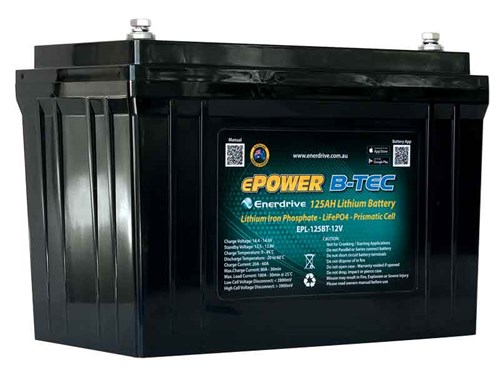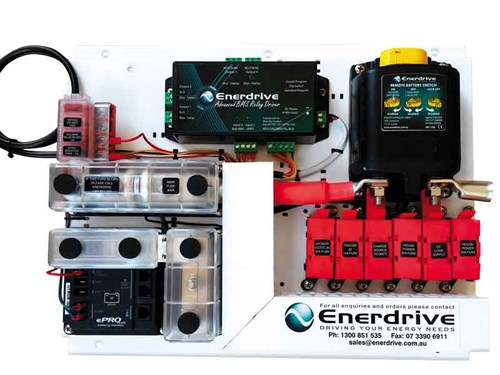Lithium batteries have become part of everyday life. They run our laptops, mobile phones and other electronic devices, as well as electric cars. They continue to displace lead acid/AGM batteries as the preferred option in many situations.

Compared with lead acid/AGM batteries of the same amp/hour capacity, lithium batteries are lighter in weight and smaller in size. They cope with greater depths of discharge, are quicker to recharge and maintain a steady discharge voltage. These attributes make lithium batteries very attractive to RV owners.
In most cases it is not as simple as ‘out with the lead acid battery and in with a new lithium replacement’. Lithium batteries need their own specific charging regime controlled by a sophisticated battery management system.
Often existing equipment in the RV – battery chargers, solar regulators and alternator charging systems – cannot be programmed to meet the lithium battery requirements and will often need to be replaced.
With new lithium batteries costing two-to-three times that of the batteries they are replacing – plus the cost of new charging equipment – you have to ask whether you really need them.
The good reasons

There are, however, good reasons for making the change. Lithium batteries are around 50 percent lighter in weight and occupy around 30 percent less space than the lead acid batteries they replace.
Living off-grid for extended periods of a month or more, with an adequate lithium battery setup and charging system, it’s feasible to have daily use (via an inverter) of domestic appliances such as a washing machine, a small air conditioner, microwave, satellite TV, a capsule coffee machine; the list goes on.
The lithium battery has a potential life cycle of around three times that of a lead acid/AGM battery. This goes a long way to offsetting their higher initial cost, provided they areproperly managed.
Batteries suitable for RVs should have a battery management system to monitor and optimise each cell within the battery during normal operation. This will protect the battery from overcharging, over discharging, going over temperature, and short-circuiting – providing safe and accurate operation of the battery.
Some lithium batteries can be monitored by smartphone via an Android or Apple app allowing remote monitoring of battery capacity, voltage, current, state of charge and more.
Lithium batteries come into their own at re-charge time.
They have a speedier, more efficient recharge cycle that translates into less generator time and /or shorter solar recharge time. They can also be left for long periods in a semi-discharged state without damaging the battery, unlike a lead acid battery.
It is an old adage in the lead acid battery industry; ‘batteries don’t die of old age, they are murdered’. The same will apply to lithium batteries if they are not properly managed.
Lithium batteries becoming available in New Zealand typically provide up to 60 percent* more useable power compared with their lead acid equivalent, are 50 percent lighter, and 30 percent smaller.

The Enerdrive BMS Relay Driver is part of the battery management system
While they are unlikely to reduce in price in the near future, there’s no doubt that lithium batteries will fill a niche market in the New Zealand RV scene.
If you are interested, the first step is to carefully analysis your RV energy needs and the on-board equipment you already have to meet those needs. Then you can accurately assess whether lithium is right for you. These are tricky technical matters, so don’t hesitate to seek specialist help. My thanks to Paul Farrell of Coastal Motorhomes for his assistance with this story.
*Based on standard depth of discharge for Lithium (80 percent) and AGM (50 percent).





